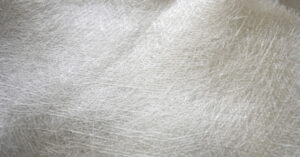How To Make a Fibreglass Mould
Creating a fibreglass mould involves preparing a plug (the original model) by sanding and applying a release agent, then layering gelcoat and fibreglass with resin to form the mould. For
We value your privacy
Our website uses cookies to enhance your experience. By continuing to use our website, you are agreeing to our use of cookies. Necessary cookies are always enabled. You can read more about our Cookie Policy in our Privacy policy
We value your privacy
Strictly Neccessary
Essential cookies enable core website functionality, such as secure logins and preference settings, without tracking personal activities or collecting data for ads. They ensure the site's proper operation and legal compliance, remaining always active
Preferences
Preference cookies enhance your browsing by remembering settings like language and regional preferences, tailoring the site to your needs without tracking activity across other websites
Statistical
Statistics cookies gather anonymous data on site interactions and page visits to help improve functionality, ensuring a smoother user experience without personally identifying users
Marketing
Marketing cookies are used to identify visitors across different websites, such as those operated by content partners or ad networks. These cookies allow companies to build a profile of a visitor’s interests and preferences, enabling the delivery of personalized ads that are relevant and engaging on other websites.
Cookies are small text files stored on your computer by websites you visit. They help users navigate websites efficiently and enable certain essential functions.
Cookies necessary for the website to function properly can be set without your consent, while all other cookies require your approval before being used in your browser.
Additionally, we use cookies to gather data for personalizing and evaluating the effectiveness of our advertising.
For more information, please refer to the Google Privacy Policy.
You can find the list of all the cookies that we use on our website here.
Welcome to the Tricel Composites Articles page!
Here, you’ll find information on the latest advancements, best practices, and expert insights in the composites industry. Our articles provide valuable guidance and inspiration, whether you’re looking to enhance your knowledge on resin and gelcoat applications, stay updated on industry trends, or explore innovative solutions for your projects.
At Tricel Composites, we support your journey towards safer, more efficient, and cutting-edge composite applications. Our experts regularly contribute articles on various aspects of the composites industry, including technical advice, product innovations, and practical tips for improving workshop practices. Staying informed in a rapidly evolving field is crucial, and our articles aim to keep you ahead of the curve.
Explore topics like reducing Styrene exposure, optimizing gelcoat application techniques, and understanding the benefits of low styrene resin products. Learn how to improve ventilation systems, review application processes, and ensure employees use the right Personal Protective Equipment (PPE). Our blog posts also cover industry trends, regulatory updates, and case studies highlighting successful composite solutions.
Whether you’re a seasoned professional or new to the composites industry, our articles offer insights to help you achieve better results in your projects. Dive in and discover how Tricel Composites can support your efforts to create high-quality, safe, and efficient composite applications. Stay informed, inspired, and ahead with Tricel Composites.
Thank you for visiting our Articles page. We hope you find the information useful and enlightening. If you have questions or need assistance, please contact our team.
Happy reading!
Creating a fibreglass mould involves preparing a plug (the original model) by sanding and applying a release agent, then layering gelcoat and fibreglass with resin to form the mould. For
Resin-bound driveway systems, combining aggregates with resin, offer durable, low-maintenance surfaces suitable for residential, commercial, and public applications. Proper installation and maintenance ensure longevity and aesthetic appeal.
As of August 24, 2023, EU regulations mandate that all professional and industrial users handling polyurethane products containing more than 0.1% monomeric diisocyanates complete safety training. Ensure compliance by registering

MID Glassfibre Supplies has rebranded as Tricel Composites, enhancing its position as a leading UK-based supplier of composite materials.
Discover top adhesives and sealants for your next project, including epoxy resins, polyurethane sealants, silicone adhesives, and more. Ensure lasting results by selecting the right products. Explore our recommendations today.

Fibreglass, also spelled fiberglass, is a composite material made by reinforcing plastic with fine glass fibers, resulting in a lightweight yet strong product. It’s commonly used in various applications, including

Tricel Composites is now the exclusive distributor of Coosa Composites panels in the UK, Ireland, and France. This partnership brings high-performance, lightweight, and rot-resistant composite solutions to marine, industrial, transport,
Fibreglass tapes enhance strength and durability in various applications, offering resistance to water, chemicals, and temperature fluctuations. Explore their benefits and applications in our detailed guide.
Glass tape reinforces joints and edges in fibreglass applications. It’s essential for boat and kayak construction. Learn more about its applications and benefits.